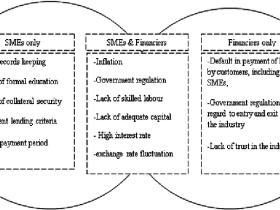The financial landscape is undergoing a dramatic transformation. Digitalization, new technologies, and evolving customer needs are driving banks to rethink customer relationships. Simply opening accounts and processing transactions no longer suffices. Today, building long lasting and meaningful connections with clients is paramount to success.
The Importance of Strong Customer Relationships:
Strong customer relationships translate into tangible benefits for both banks and their clients. Satisfied customers are more likely to:
- Remain loyal: Loyal customers are less likely to switch to competitors, providing a stable foundation for the bank’s long-term growth.
- Become advocates: Satisfied customers are more likely to recommend the bank to friends and family, driving valuable organic growth.
- Utilize a wider range of services: A strong relationship fosters trust, encouraging customers to explore additional products and services offered by the bank, increasing their lifetime value.
Strategies to Enhance Strong Customer Relationships:
Building strong customer relationships requires a Comprehensive approach, encompassing proactive engagement, data-driven insights, personalized services, and continuous adaptation. Let’s delve deeper into some key strategies:
1. Proactive Engagement: Moving Beyond Transaction Processing:
Shift from being reactive to proactive partners in your customers’ financial journeys. This means:
- Offering timely alerts and reminders: Inform customers about low balances, upcoming bill payments, or expiring products, enabling them to manage their finances proactively.
- Providing financial planning sessions: Offer personalized consultations to help customers set and achieve their financial goals, demonstrating genuine interest in their well-being.
- Sharing educational resources: Equip customers with the knowledge they need to make informed financial decisions through educational articles, webinars, and workshops.
2. Using Customer Data to Create Personal Connections:
Imagine having a deeper understanding of your customers, their needs, and their preferences. This deeper knowledge can be used to tailor your interactions and service offerings, creating a truly personalized experience for each individual. That’s the potential hidden within customer data!. However, knowledge from individual branches or advisors often remains siloed. To unlock the true power of data:
- Implement knowledge-sharing mechanisms: Share customer insights across branches, call centers, and service centers, ensuring a consistent, informed experience across touchpoints.
- Utilize data analytics: Identify patterns and trends in customer behavior to tailor products, services, and marketing messages to individual needs and preferences.
- Maintain data security and privacy: Upholding responsible data practices is crucial for building trust and ensuring customer confidence.
3. Empowering Customers through Self-Service Options:
While human interaction remains important, empowering customers with self-service options enhances convenience and caters to their diverse preferences. Consider offering:
- User-friendly mobile app: Allow customers to manage accounts, transfer funds, pay bills, and access financial information on the go.
- Secure online banking platform: Provide a comprehensive platform for managing finances, including bill pay, account statements, and investment tools.
- Automated features: Offer features like automatic transfers and bill payments, streamlining financial management and reducing manual tasks.
4. Expanding Your Portfolio to Meet Diverse Needs:
To cater to a broader customer base and remain competitive, offer a diverse range of financial products and services. This can include:
- Variety of account options: Checking, savings, money market, and investment accounts catering to different financial goals and risk profiles.
- Investment opportunities: Provide access to stocks, bonds, mutual funds, and other investment vehicles for wealth creation.
- Insurance products: Offer property and casualty insurance, life insurance, and other risk management solutions.
- Wealth management services: For high-net-worth individuals, provide customized wealth management solutions and guidance.
5. Evolving with the Times: Embracing Innovation and Flexibility:
The financial landscape is dynamic and constantly evolving. Successful banks need to be adaptable and embrace change. This involves:
- Staying abreast of industry trends: Monitor emerging technologies like blockchain, artificial intelligence, and open banking to identify potential applications that enhance customer experiences.
- Investing in innovation: Continuously explore and implement innovative solutions to improve service delivery, enhance security, and personalize offerings.
- Welcoming feedback and being open to change: Actively seek customer feedback through surveys, focus groups, and social media interactions to identify areas for improvement and adapt to their evolving needs.
Conclusion: Building Lasting Connections in a Digital AgeIn today’s digital age, building meaningful connections is crucial for banks to thrive. By implementing these strategies, banks can move beyond transactional relationships and become trusted partners in their customers’ financial journeys. By prioritizing proactive engagement, data-driven insights, personalized services, and continuous adaptation, banks can foster long-term relationships with their customers, leading to mutual success in the ever-changing financial landscape.








Leave a Reply